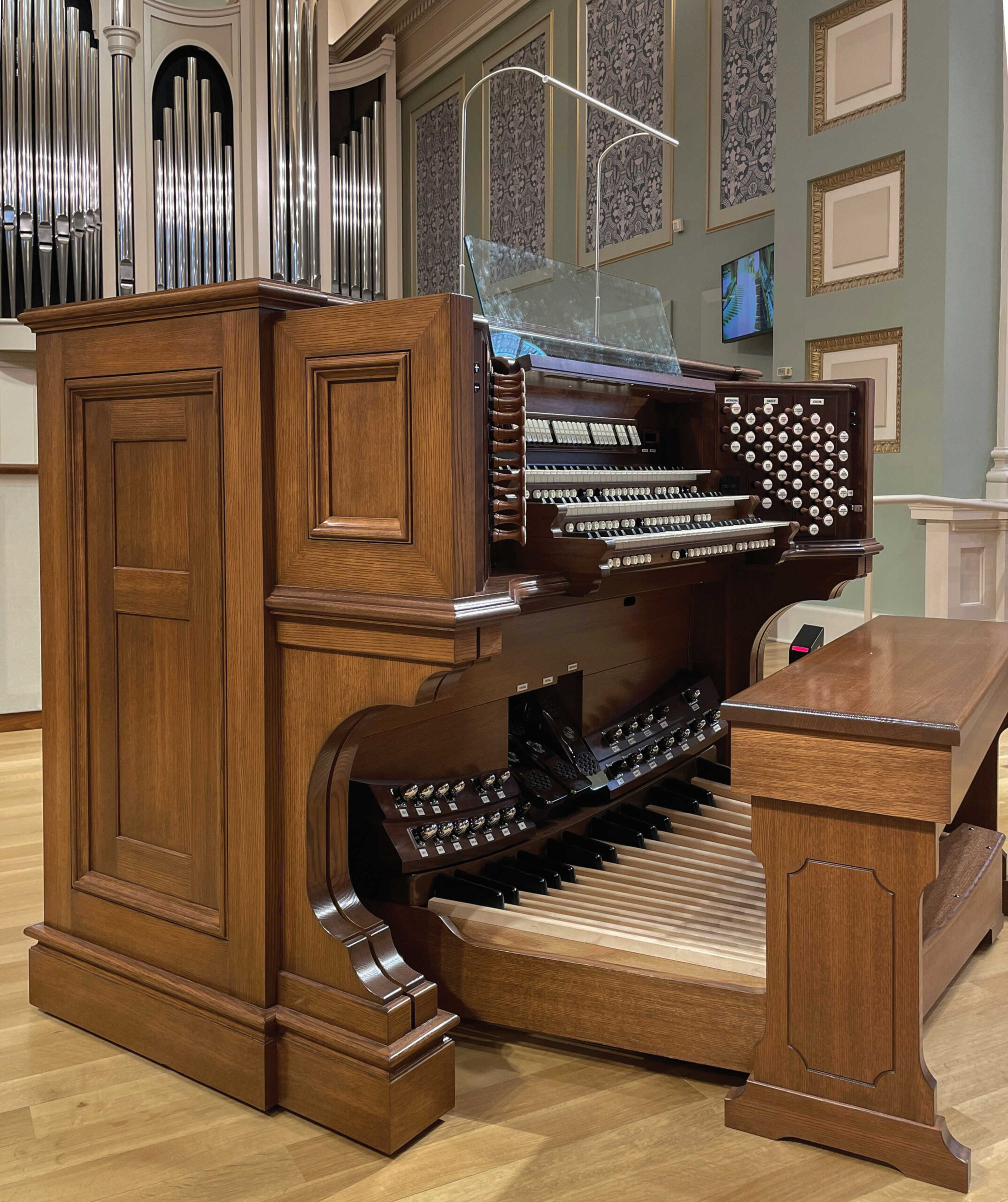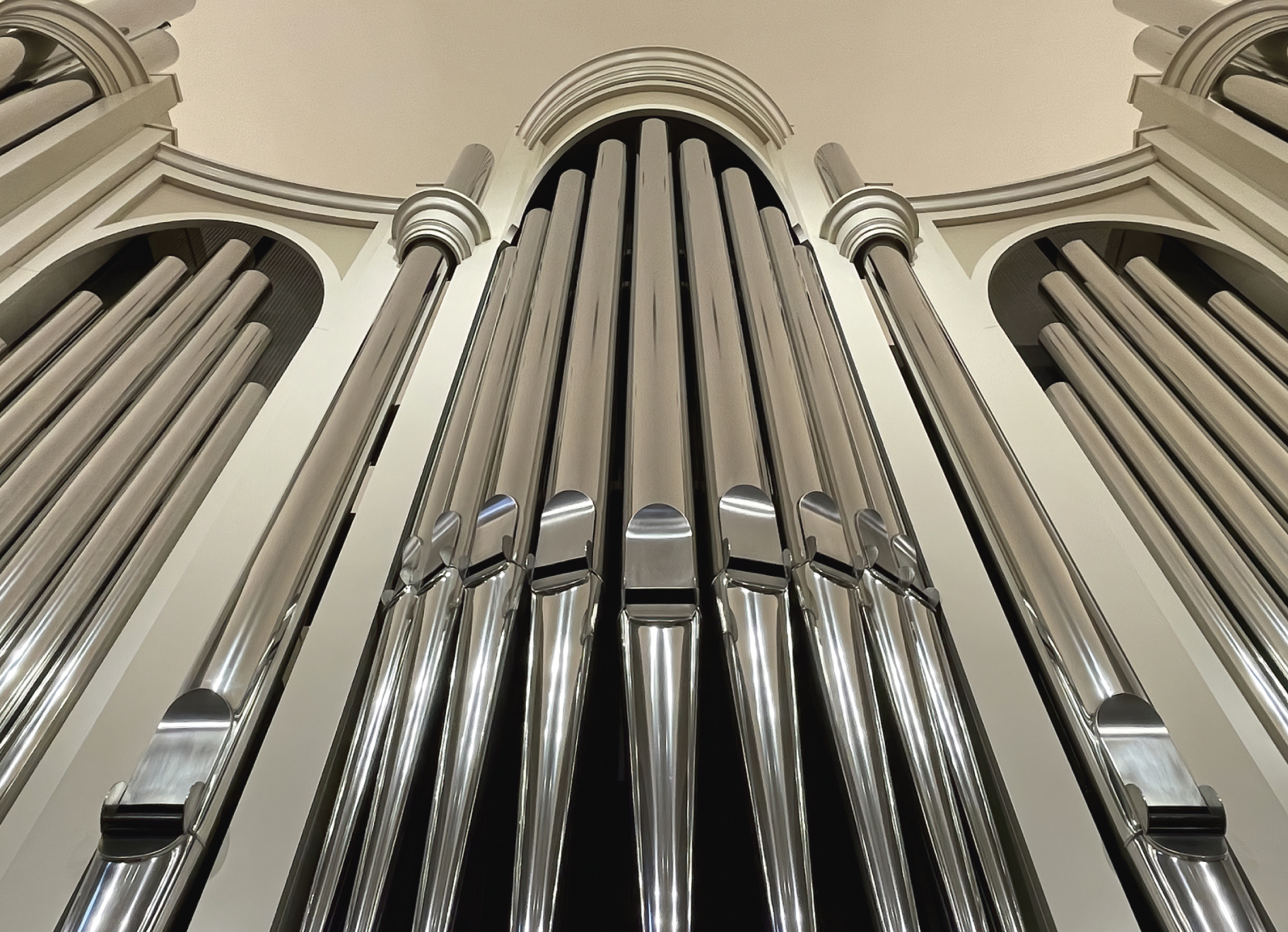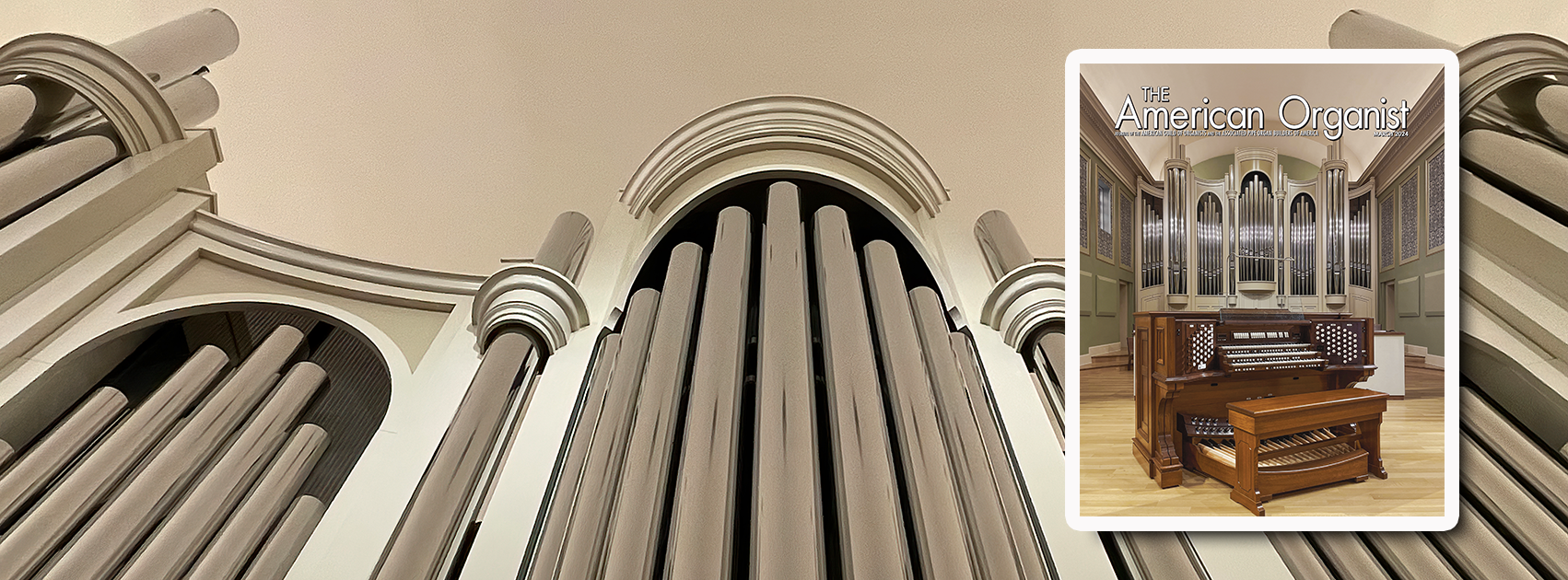 Gloria Dei Lutheran Church
Gloria Dei Lutheran Church
St. Paul, Minnesota
Létourneau Pipe Organs
Saint-Hyacinthe, Quebec
Stoplist
From the Builder
Gloria Dei Lutheran Church is a progressive and welcoming ELCA congregation serving the Highland Park neighborhood of St. Paul, Minnesota. The church is an active place, enthusiastically carrying out a wide array of outreach and social justice ministries, including environmental, housing, hunger, and advocacy initiatives.
The present sanctuary opened in 1952 and was served by the pipe organ from Gloria Dei’s previous building until 1964, when the instrument was replaced by M.P. Möller’s Opus 9864. This organ was packed into an oddly shaped chamber off to one side of the chancel and, to make the most of its 36 ranks, employed significant unification throughout its three-manual specification. The instrument sounded better than it had any right to, thanks to a generous acoustic, but it was still augmented in 1975 by an eight-rank Antiphonal division—again by Möller—high on the back wall of the sanctuary.
After five decades of service, the Möller’s electropneumatic windchests were exhibiting signs of leather failure, but the tight chamber made chest repairs unreasonably difficult and costly. The organ’s compromised location also meant that a complete restoration—or even an all-new instrument in the same location—would not provide the quantum improvement the church was seeking. After exploring all options, Gloria Dei’s organ committee determined that the new instrument should be installed across the front wall of the chancel. Exceptionally, the committee’s discernment process blossomed into a larger sanctuary-renewal campaign titled “Rise, O Church.”
In the meantime, Létourneau had been advertising a 1959 Casavant Frères instrument that had been rescued from a closed church in Toronto. Our advertisement proposed completing the Casavant’s specification with several new stops, and it caught the attention of organ consultant Gregory Peterson (of Luther College) and director of music Tim Strand. As this instrument was installed behind a grille, we also proposed new casework with polished facade pipes as part of the expansion.
Casavant Opus 2518 was an early organ in Lawrence Phelps’s tenure as the company’s tonal director. Vestiges from the pre-Phelps era included the Swell 16′ Flûte conique and 8′ Aeoline, the Choir 2⅔′ Nazard made up of Chimney Flute pipes, and an augmented Pedal division. On the other hand, the narrow reed stops with parallel shallots, the Choir 4′ Koppelflöte, the generally thin-walled pipework, and the large-scale upperwork were all part of the Phelps aesthetic.
With the Casavant’s 34 ranks as a starting point, we built an additional 18 ranks to complete the instrument’s four divisions. We added a 16′ Contra Geigen and a soaring 8′ Harmonic Flute to the Great, as well as Trumpet stops at 8′ and 4′ pitch. The Swell was largely complete, so our changes were limited to the replacement of the 8′ Aeoline with a 4′ Principal and the addition of a 16′ Bombarde stop with full-length resonators to complement the existing 8′ Trompette and 4′ Clairon.
Devised when Positiv divisions were coming into fashion, the original Choir was short on Principal tone. A new secondary chorus—composed of an 8′ Geigen Principal, 4′ Geigen Octave, and three-rank Sharp Mixture—addresses this. A new undulating rank that partners with the 8′ Spitzflöte adds yet another dimension to this versatile division. To augment the existing Swell 8′ Oboe and Choir 8′ Clarinet stops, we added a delicate 8′ Cor anglais as a third solo reed color.
The Pedal division is built on a rich-toned 16′ Contrabass rank in zinc, with new 8′ Principal and 4′ Choral Bass stops filling out the chorus, along with a three-rank Mixture. Bold reed stops at 16′ and 8′ were also added to give the division the necessary grandeur and power.
The Casavant’s electropneumatic windchests were restored in our workshops, with new electropneumatic chests provided as needed. The manual divisions’ original 68-note compass was retained, and this was carried over into the new chests as well. The organ’s painted maple casework was designed in house by Claude Demers and features polished pipework in 70 percent tin for the Great 16′ Contra Geigen, the Great 8′ Principal, and the Pedal 8′ Principal. A new three-manual console made from rift-sawn red oak with walnut interior panels serves as the instrument’s flight deck.
The Antiphonal division, with its 8′ Trompette en chamade with polished brass resonators, was retained as part of the project to support hymn singing from the rear of the nave. The Möller electropneumatic windchests were also fully restored, while the wind system was reconfigured to incorporate a modern blower.
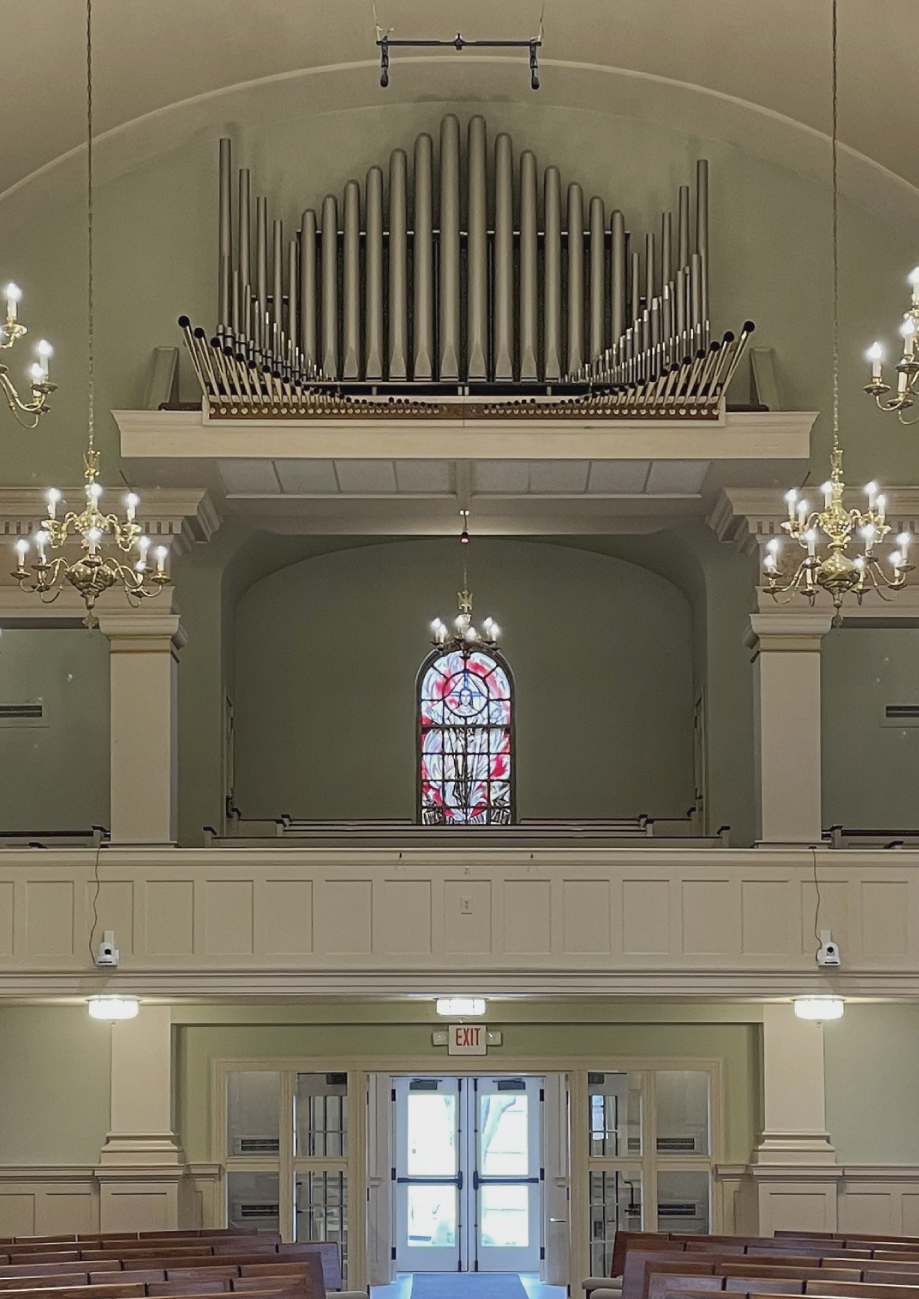
Létourneau’s Opus 137 was delivered to Gloria Dei in late October 2022; it was installed in collaboration with the Organ Clearing House over a four-week period. The voicing of the instrument got underway after Thanksgiving, with the welcome participation of Jonathan Ortloff for several weeks. The project was completed in early 2023.
Tim Strand put Opus 137 through its paces during its first solo recital on April 23, 2023, with works by Cook, Bach, Duruflé, and Vierne played to a large and enthusiastic crowd. The recital also included two premieres. The first, a Partita on “Rise, O Church, Like Christ Arisen” by David Cherwien, is based on the hymn of the same name—the tune, Surge ecclesia, was composed by Tim Strand—and features words by Cherwien’s late wife, Susan. The second is an elegant new setting of the Swedish tune Sommarpsalm (“The Earth Adorned in Verdant Robe”) for saxophone and organ by Robert Buckley Farlee; Kurt Claussen played soprano saxophone for the premiere.
Many people played important roles—some visible, some less so—in helping us and Gloria Dei Lutheran Church realize this project. Létourneau Pipe Organs would specifically like to thank Tim Strand, Greg Peterson, Pastor Bradley Schmeling, Mike Kruger (chair of the church’s Sanctuary Renewal Task Force), Teresa Sterns (church project manager), Todd Kraft and Sara Du of HGA Architects, and the team at Langer Construction for their efforts—all of which made this project the success that it is.
Andrew Forrest
From the Director of Music
As Gloria Dei’s congregation became increasingly aware of the Möller’s unreliability, an organ committee was formed, and they worked hard for more than five years to identify the most desirable approach for the church and to educate the congregation on the need to replace the instrument.
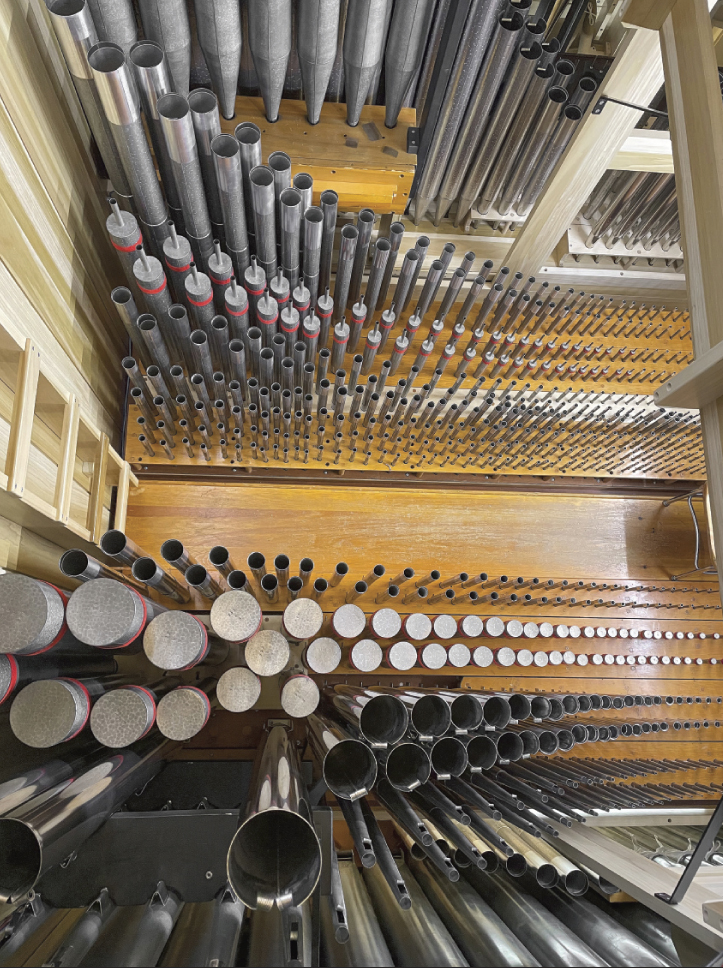
There was a strong desire for stewardship of both financial and ecological resources, which made finding an existing instrument and repurposing it for our space an attractive goal. The biggest challenge, however, was to communicate that abandoning the chancel organ chamber would lead to a better outcome, and that instead, a new instrument should be at the back of the chancel, facing the nave. This change would require a major renovation of the chancel and nave—a renovation that far exceeded the cost of the new organ itself.
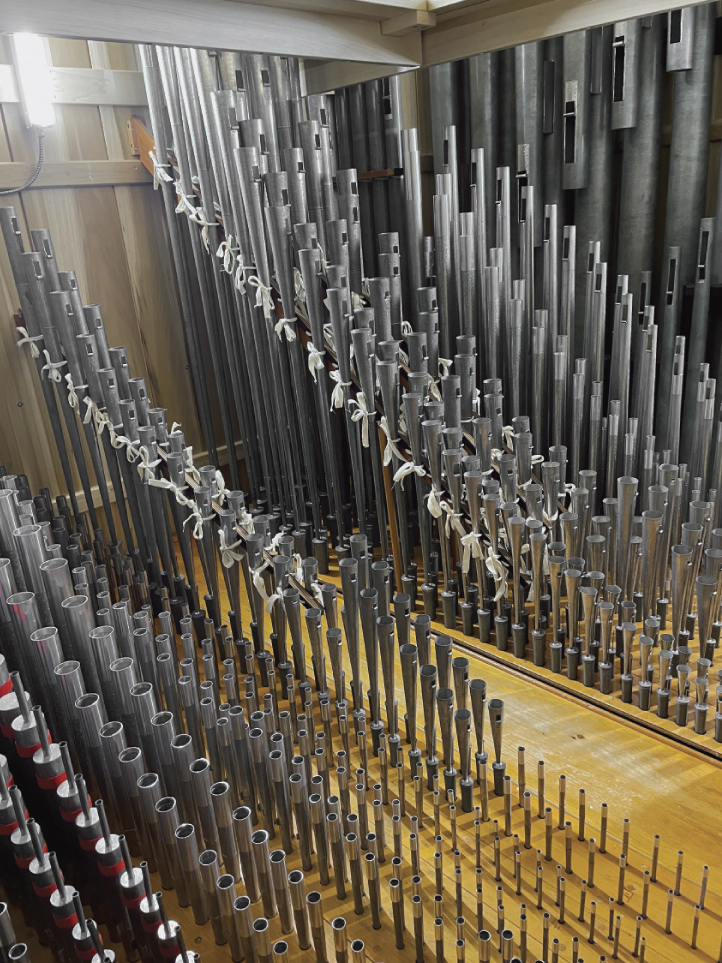
After much education and deliberation, we were ready for a congregational vote on the proposal in May 2020. The arrival of the COVID pandemic, however, put this long-awaited project on hold. Still, the congregation thrived in many adaptive ways during this time, and with the knowledge that the project’s finances were secure, they voted to move forward with the installation in May 2021.
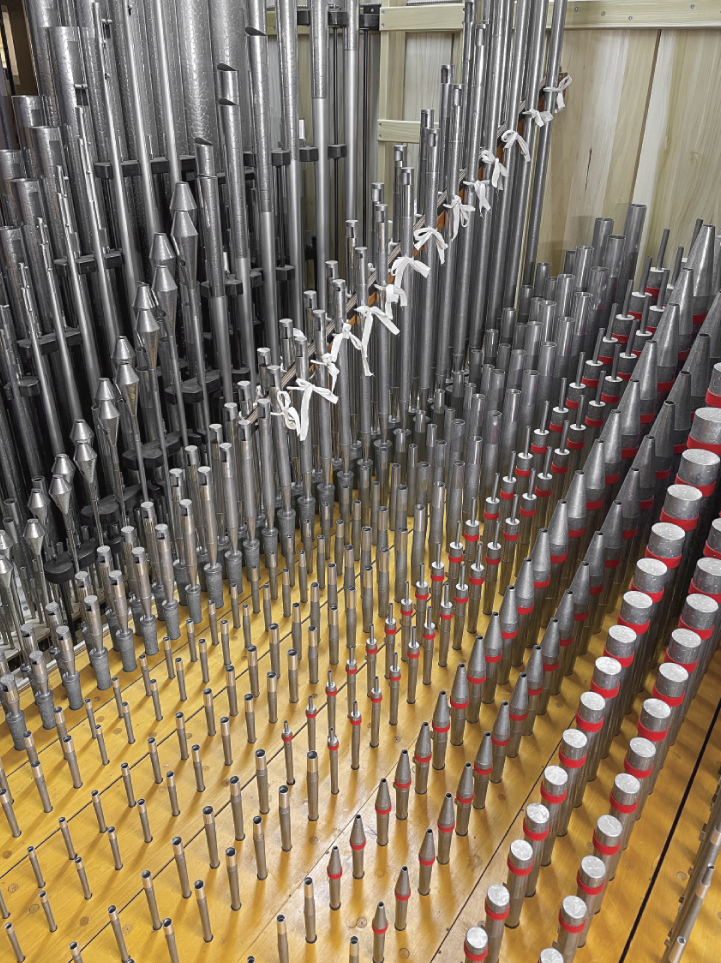
The choice of Létourneau as our builder gave us the opportunity to start with a high-quality Casavant as a core and expand it into a larger organ with great flexibility, color, and variety, to lead our congregation’s robust singing and serve as a fine recital instrument. We were also eager to give Létourneau its first significant project in the Twin Cities, a place with a broad and active musical scene.
As music director and organist, two of my goals for the new instrument were that it would have breadth of foundational tone and that it would not be another cookie-cutter installation, devoid of any distinguishing characteristics. Létourneau accomplished these objectives for us in a big way. The organ is bold when it needs to be bold, and it is beautiful when it needs to be beautiful. The strings are sweet, the reeds are both elegant and gutsy, and the Great Harmonic Flute is luscious! The instrument has already been heard in many recitals, and Gloria Dei was one of the chosen venues for the AGO regional convention last summer. We look forward to sharing it with the wider community for many years to come.
Tim Strand
